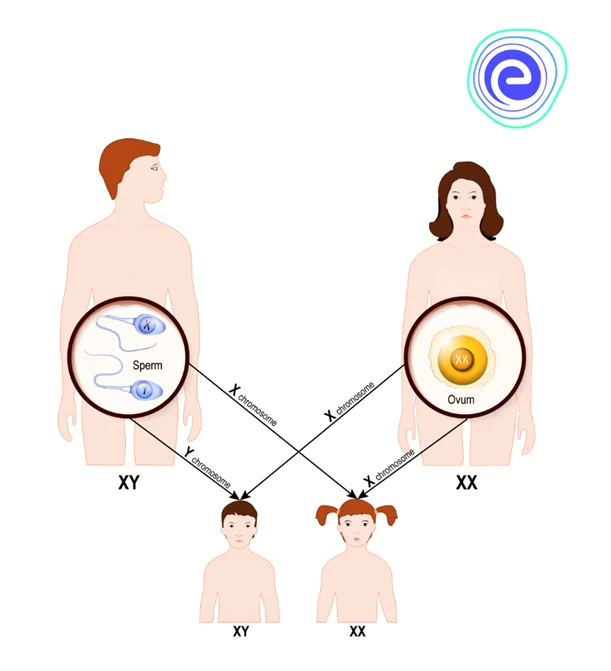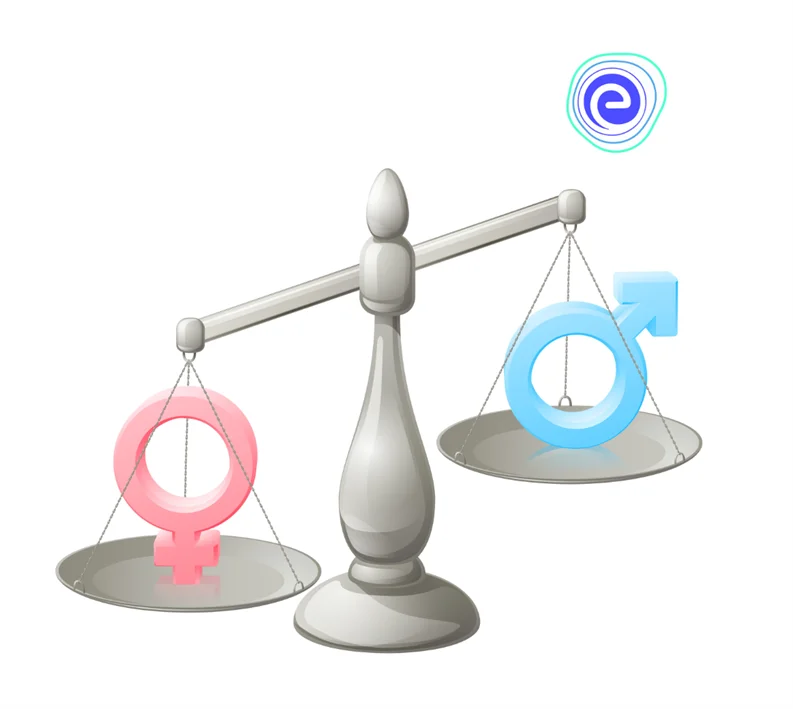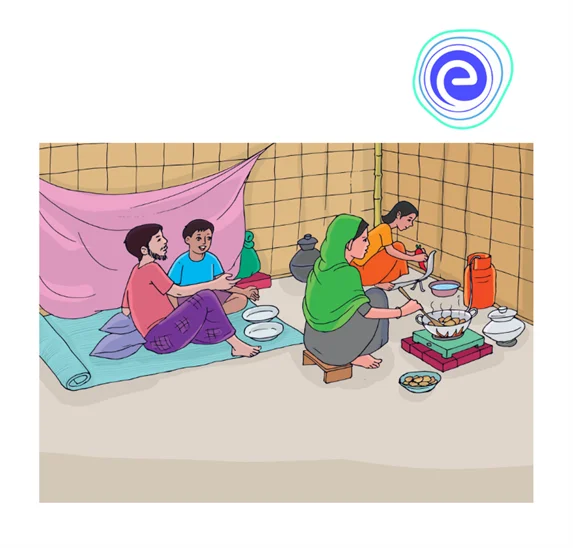- Written By
Shilpi Shikha
- Last Modified 09-02-2025
Inequality of Sexes: Cause, Effects and Solutions
Inequality of Sexes: Gender is a notion formed by society whereas the biological limits between genders are set by nature. Inequality of sexes in India is a complex and multifaceted issue that manifests itself in a wide range of approaches, disciplines, and social levels. The discriminative socialisation process has led to many evil practices associated with reproductive health like female foeticide.
The Government of India brought the Preconception and Pre-Natal Diagnostic Techniques (PCPNDT) Act, 1994 to abolish such evil practices. Throughout the previous decade, gender equality and women’s empowerment have been recognised as important to the social and economic success of a nation. This inequality of sexes is a social stigma that is the root cause of various problems in our society. Let’s try to understand the inequality of sexes in detail.
Sex Determination: Overview
The biological system that controls the development of sexual traits in an organism is known as sex determination. firstly, let’s see how sex is determined in human foetuses.
Learn About Amniocentesis Here
Fig: Sex Determination
- Humans have the XY sex-determination mechanism. Humans have 23 chromosome pairs.
- Out of these 23 pairs, 22 are Autosomes and only one is the ‘Sex Chromosome, which is involved in the sex determination process. Both men and females have two sex chromosomal sets.
- Males have one X (XY) and one Y (YY) chromosome, both of which are active. Females have two X (XX) chromosomes, one of which is active.
- Regardless of whether they are a boy or a girl, all children get one X chromosome from their mother.
- As a result, the kind of chromosome inherited from their father will decide the sex of the offspring.
- A male will inherit the Y chromosome, whereas a girl will receive the X chromosome.
- The SRY gene is found on the Y chromosomes. In placental animals and marsupials, SRY, or the sex-determining region of Y, also known as the Testis Determining Factor (TDF), releases a protein that begins testis development during embryogenesis.
- A male sperm cell contains roughly 50% Y sperm cells and 50% X sperm cells in his sperm. As a result, the probability of birth of the male child and a female child is 50-50.
Sex Ratio
India’s decades-long attempts to increase the gender ratio appear to be paying off. India’s sex ratio improved in 2021, with 1020 females for every 1000 males, marking the first time the country has had a female majority. Under the Pre-natal Diagnostic Techniques Regulation and Prevention of Misuse Act of 1994, which was amended in 2002, the government prohibited the determination of a foetus. This was done to address the country’s alarming decline in the number of girls born per 1000 boys. In the early stage of pregnancy, many couples use diagnostic techniques to know the sex of the unborn child.
Fig: Uneven sex ratio
Gender disparities and their societal causes have had an influence on India’s gender ratio, women’s health throughout their lives, educational achievement, and even economic situations. It also prohibits the establishment of equal rape laws for both men and women.
Social Inequality
The fundamental source of socioeconomic disparity is gender. Gender inequality in India is a complex issue that mostly affects women. However, others say that certain gender equality indexes harm males, or that it affects both men and women equally. When looking at India’s population as a whole, however, women are at a significant disadvantage in various aspects. Despite the fact that India’s constitution guarantees men and women equal rights
Fig: Unequal Pay for Similar Work
Causes of Gender Inequality
Gender inequality is caused by several factors which are deeply rooted in our society and have become part of various cultures. Factors such as social inequality, sexism, gender issues create hindrances in the development of society.
Fig: Household Works are Considered Feminine
Major factors which cause gender inequality are listed below:
- Uneven Access to Education
- Lack of Employment Equality
- Job Segregation
- Lack of legal protections
- Lack of Bodily Autonomy
- Poor Medical Care
- Lack ofdom
- Racism
- Society Mindset
Female Foeticide
Female foeticide is the practice of determining the gender of a fetus and aborting it if it is a girl. Despite the fact that it is illegal, many individuals continue to do so.
The Indian government has taken a number of steps to address the issue. The “Pre-Conception and Pre-Natal Diagnostic Techniques Act 1994”, which was amended in 2003, was adopted by the Indian government. The law illegalized the practice of determining a child’s gender before birth. The National Inspection and Monitoring Committee inspects ultrasound diagnostic facilities (NIMC). The law also makes it illegal to discriminate on the basis of sex.
The reason behind female foeticide:
Gender inequality has severe effects on society. Interestingly gender inequality doesn’t only affect women of all ages but also impacts society in negative ways. Reasons behind female foeticide are listed below:
- Son preference,
- the low status of women,
- social and financial security associated with sons,
- socio-cultural practises such as dowry and
- violence against women, small family norms, and
- consequent misuse of diagnostic techniques with the intention of female foeticide
Fig: Lesser No. of Woman are Employed
What Can Be Done To Bring Gender Equality?
Societal participation and awareness are very important to bring gender equality in society. Following steps can be taken to address the root cause of inequality:
- Make education more gender-inclusive
- Talk to women of every age and spread awareness
- Raise the bar of ambitions for little girls
- Stop child marriage and sexual harassment in the workplace.
- Teach girls to raise voices against mental, physical or sexual abuse.
- Mothers should be empowered. An educated mother will raise an educated child.
- Give ‘women’s labour’ the respect it deserves.
- Get more women into positions of leadership.
- Encourage women to pursue non-traditional careers.
- Teach male children to respect women. Change the “definition” of the real man.
Summary of Inequality of Sexes
Gender inequality prohibits the establishment of equal rape laws for both men and women. Positions of power and authority are typically given names that stress the masculine gender, such as “chairman” and “policeman. Gender inequality is caused by several factors which are deeply rooted in our society and have become part of various cultures. Factors such as social inequality, sexism, gender issues create hindrances in the development of society.
Gender inequality has severe effects on society. Interestingly gender inequality doesn’t only affect women of all ages but also impacts men in negative ways. Female foeticide is the practice of determining the gender of a fetus and aborting it if it is a girl. Despite the fact that it is illegal, many individuals continue to do so. Reasons include the low status of women and socio-cultural practices such as dowry and violence against women. Greater equality is required for the development.
FAQs on Inequality in Sexes
Q.1. What is female foeticide?
Ans: Female foeticide is the practice of determining the gender of a fetus and aborting it if it is a girl.
Q.2. Which act prevents female foeticide?
Ans: Pre-Conception and Pre-Natal Diagnostic Techniques Act (PCPNDT), 1994, prevent female foeticide.
Q.3. What is the punishment for female Foeticide?
Ans: The PNDT Act stipulates a maximum sentence of three years in prison and a fine of up to Rs 50,000.
Q.4. What is gender bias?
Ans: Prejudice toward one gender over the other is termed gender bias.
Q.5. What is gender equity?
Ans: The process of being fair to women and men is also termed gender equity.
Learn About Sex Determination Here
We hope this detailed article on the Inequality of Sexes helps you. If you have any queries, feel to ask in the comment section below and we will get back to you at the earliest.













































